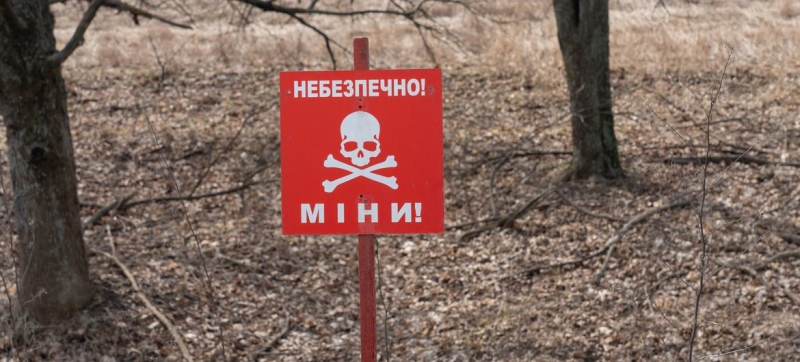
Mine danger sign, Ukraine. One person in the world dies every hour as a result of an explosive device explosion. Peace and Security
Mines, explosive munitions and improvised explosive devices continue to kill and injure people in many hot spots around the world. As a result of the explosion of such a device, on average one person dies every hour, and many of the victims are children.
The use of improvised explosive devices is constantly growing around the world. Mines threaten civilians, humanitarian organizations, peacekeeping missions and United Nations personnel.
In 2024, the International Day for Mine Awareness and Assistance in Mine Action, celebrated on April 4, will place special emphasis on raising awareness of the needs of and the rights of people with disabilities in conflict situations. Security Council Resolution 2475, adopted five years ago, calls on UN Member States to ensure the safety of persons with disabilities, provide them with access to rehabilitation and include them in conflict prevention and peacebuilding activities.
Half of the victims of explosive weapons are children
In recent decades, combat operations have increasingly taken place in densely populated areas, including large cities, so deaths and injuries are caused by the use of explosive weapons civilians, many of whom are children.
Injuries received in such cases are usually very serious – from severe burns to loss of limbs, hearing or vision. In addition, children who are victims of explosive weapons may suffer from post-traumatic stress disorder and anxiety disorder and need psychological support.
The use of explosive weapons can also indirectly affect the lives of children living in combat zones. Attacks on residential areas destroy civilian infrastructure – homes, schools, hospitals, water supply facilities, power plants.
And even after the end of the conflict, mines and unexploded ordnance (so-called “remnants of war”) continue to pose a threat to human life and health. Children are especially vulnerable because they often play outside, are interested in unfamiliar and strange objects, and are unaware that they can be very dangerous.
Ukraine’s deadly problem
In recent years, Ukraine has joined the list of countries whose territory is largely contaminated with mines and unexploded ordnance. According to experts, even if the war ends in the very near future, it will take at least a decade to completely clear Ukrainian soil. As of early April 2024, 295 people died and 663 were injured from accidents involving explosive objects in Ukraine.
“Working in Ukraine made me understand that that everything I had done before was a rehearsal,” says Paul Haslop, a mine clearance specialist with 30 years of experience working in a variety of hot spots around the world. Haslop is part of a United Nations Development Program (UNDP) mission that is clearing Ukrainian territory of mines and unexploded ordnance.
To help his interlocutors assess the scale of the problem, Haslop provides the following calculations: during any armed conflict, about 10 percent of all ammunition used by the opposing sides does not work. In Ukraine, according to experts, up to 30 thousand missiles and shells are used daily, that is, about three thousand of them do not work. If the conflict lasts a thousand days (just under three years), deminers will sooner or later have to deal with three million unexploded bombs.
The process of clearing an area of mines and unexploded ordnance often takes decades and requires significant investment. The total cost of demining in Ukraine is expected to be about $35 billion.
“With the right resources and commitment from the international community, and perhaps something like a Marshall Plan, we could help Ukraine eliminate 75 percent of the economic impact of the conflict by 2028,” Heslop adds.
Information saves lives
This Wednesday the United Nations Development Program (UNDP) and BBC Media Action, with the support of the Government of Japan, announced the launch of the campaign to inform the population of Ukraine about the danger posed by mines and explosive objects.
The campaign, developed in collaboration with the State Service of Ukraine for Emergency Situations and key non-governmental organizations in this area, is designed cover the entire population of the country. Particular attention will be paid to vulnerable categories of the population and regions with an increased number of accidents associated with explosive ordnance.
The preliminary phase of the campaign began in December 2023, and the active dissemination of educational materials through television, radio, social networks and outdoor advertising will start in June this year.
